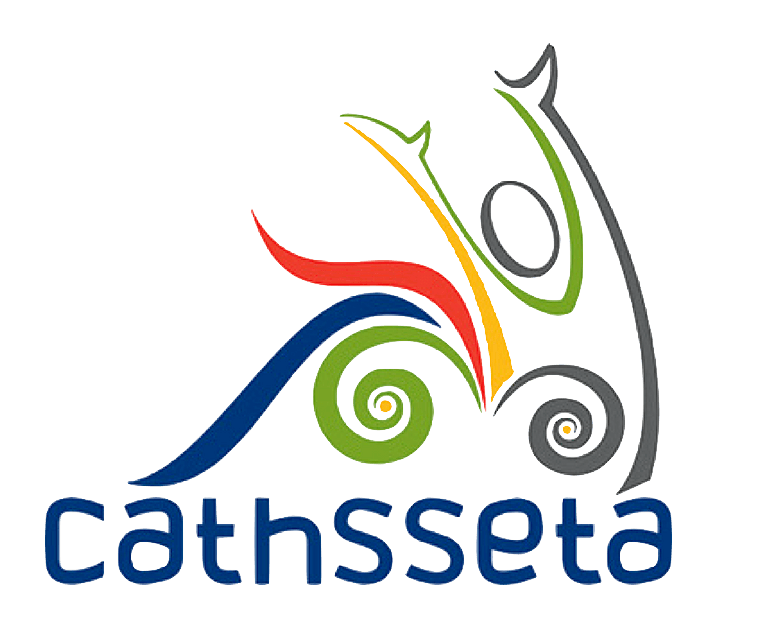Free Training & Career Tips... Subscribe to Get Weekly Career Tips

By Subscribing You are Agreeing to Terms and Conditions
The Culture, Art, Tourism, Hospitality, and Sport Sector Education and Training Authority (CATHSSETA) was established under the Skills Development Act in 2001 and is currently one of the 21 SETAs established. The body was formerly known as the Tourism and Hospitality Education and Training Authority (THETA) before 2012. It was later renamed the Culture, Art, Tourism, Hospitality and Sport Sector Education and Training Authority in 2012. One of the aims of CATHSSETA is to facilitate skills development within the concerned sub-sectors via disbursement of grants for training programs and supervision of education and training according to the National Skills Development Strategy (NSDS).
The concerned sub-sectors are the arts, culture, heritage sub-sector and conservation, hospitality, gaming and lotteries, and hospitality sub-sectors. Others are the sub-sectors in charge of sports, recreation, fitness, travel, and tourism. The obligations and functions of the CATHSSETA are outlined in section 10 of the Skills Development Act, 1998. The Public Finance Management Act also governs the body. This act ensures that public bodies do not perform their duties and responsibilities in a wasteful or careless.
In 2016, the CATHSSETA opened six regional offices to reach provinces that did not have access to the body’s services. The regional offices have been in operation since April 2016 and have proven to be efficient in the provision of skills development within such a diverse sector. CATHSSETA represents six different sub-sectors and provides skill development and training opportunities for stakeholders in these sectors. They also oversee and cater to the different needs of employers, employees, unemployed youth, and learners. They do so through learnership programs, apprenticeships, internships, and bursaries.
CATHSSETA supports training interventions that are set to standards of the National Qualifications Framework (NQF). All training provided by the institutions accredited by the body is subject to quality control and assessed by the best international benchmarks. CATHSETA is an amalgamation of the Arts and Crafts sub-sector previously part of the Media, Advertising, Publishing, Printing and Packaging (MAPPP) SETA main focus on sport and tourism. It also incorporates the role in which the Tourism and Hospitality Sector Education and Training Authority (THETA) previously performed. The MAPPP SETA was established to support and ensure education and training were provided for those interested in advertising, publishing, visual arts, film, and electronic media and cultural heritage. This SETA was also supposed to address the packaging and printing sectors, which are more concerned with technology. It was also supposed to tackle the packaging and printing sectors, which have more to do with manufacturing and technology than creativity and production.
Like the other SETAs founded on Skills Development, the MAPPP SETA was also expected to improve skills in the concerned sectors. They were to do this through the delivery of high standard and accredited education and training. These training pieces involve college courses, short courses, and even online courses and other skills development strategies. This sector was to excel in many spheres of the South African economy and compete within the country and globally. However, only the arts and crafts sub-sectors of the MAPPP SETA are included in the current CATHSSETA design. They include culture, tourism, sport, and hospitality authority scheme.


All SETAs function to evaluate and accredit training providers within the concerned sector. They also administer collated funds received from employers in the form of Skills Development Levy and facilitate the provision of learnerships within the relevant sectors. The SETAs also conduct quality assurance tests to ensure that the high standards are being maintained. Students and learners possess the necessary skills in demand by employers in the concerned sectors.
Like other SETAs, the body is charged with developing and implementing a Sector Skills Plan (SSP). This plan outlines the skills with are in demand in each sub-sector as well as the current trends. Also, the SSP points out priorities for skills development. The body also organizes and executes learning programs while ensuring the National Qualifications Framework (NQF) implementation. CATHSSETA is also in charge of conducting quality assurance on learning in line with Quality Council for Trades and Occupations (QCTO) requirements in the different sub-sectors. They undertake quality assurance interventions and disburse levies collected from employers in the sub-sectors. From the one percent which employers in these sub-sectors pay every month, CATHSSETA receives 80% of the money and utilizes it for administration purposes, mandatory grants which employers reclaim, and discretionary grants for training purposes. The remaining 80% is used for the National Skills Fund.
As a body established by the Act of Parliament, CATHSSETA reports to the Minister of Higher Education and Training in its capacity as a statutory body. They carry out responsibilities that are discharged in the interest of the public as they handle public funds. Therefore, CATHSSETA is mandated to report to the Director-General of the Department of Higher Education and Training. Their reports must spell out how productive these public funds were used and what was achieved. They partner with different entities to facilitate skills development and contribute positively to the economy. Such entities include the Further Education and Training (FET) colleges, which are very important in skill delivery industries.
To ensure they effectively discharge their duties, the values of CATHSSETA are fairness, transparency, integrity, service excellence, and accountability. The new CATHSETA framework focuses more on sport and tourism for specialization and efficiency but still promotes hospitality and other concerned sectors. This new design will enable the body to focus on key areas that can culminate in economic development for South Africa and South Africans. CATHSSETA ensures that all training programs are subjected to high-quality control and are of the best national and international standards. The body also helps students with learnerships, apprenticeships, internships, and bursaries, giving them opportunities to get professional experience in the workplace. They do this through effective distribution of skills development levies. Summarily, the CATHSSETA plays an important role within the Post-School training and education system. The body is the link between employers in the culture, art, tourism, hospitality, and sports sectors and learners seeking employment opportunities with these employers. CATHSSETA easily does this by balancing the demand for employers’ skills and the type of skills trainees can offer.
According to the South African Qualifications Authority (SAQA), accreditation of a body or entity is the process through which that body or institution is certified as having all required to fulfill a particular obligation in the system set up by the South African Qualifications Authority. A SETA can only be accredited if the training provider completes the laid out application process prescribed by the relevant SETA. The CATHSSETA determines whether a training provider has the requirements and capacity to provide high standard training in line with the National Qualifications Framework (NQF) standards.
SETA accreditation is a vital procedure because it ensures that education and training are of the best standards and quality within and outside the country. It is also carried out to ensure that the skills provided are highly relevant and are demanded by the sectors’ employers. A training provider will attain SETA accreditation if the training provider’s courses meet the NQF standards.
CATHSSETA accredits skill development providers and registers qualified and experienced assessors and moderators operating within the CATHSSETA framework. One of the accreditation strategies used by training providers is the preferred training and market target strategy. CATHSSETA has a great interest in institutions that train high school graduates, people between the ages of twenty-five and fifty-four years. They are also interested in the business and industry training market and the vocational learning market.
Many employers complain about skills shortages, and the industries experience a lack of technical skills and knowledge. Upcoming training institutions and those already accredited identify these promising opportunities and provide scarce skills and those in high demand by the employers, thereby linking trainees to employers in the sector.
The CATHSSETA provides accreditation services to particular people and organizations that offer education, training programs, and assessment in the tourism industry and other related sub-sectors. Accredited skill development providers play a very vital role in tourism. These training providers that undertake tourism training and assessment perform important roles in tourist guides’ registration process.
One of the Skills Development Act’s objectives is to improve skills development for previously disadvantaged individuals to promote the growth and development of the economy of South Africa. This mandate is achieved through the effective disbursements of funds for skills development following SETA Grant regulations. CATHSSETA generates funds from levy-paying employers within its sub-sectors. These funds are disbursed as follows:
Discretionary grants are important for contributing to skills development and training programs. The major part of discretionary funding is directed at the provision of Professional, Vocational, Technical, and Academic Learning programs or other learning programs, which comprise the following:
According to the National Qualifications Framework, these training interventions are expected to result in qualifications or part-time qualifications and as stipulated in the Grant Regulations. CATHSSETA makes these funds accessible during a time in which it accepts applications from employers. The opening of this period is made public on the CATHSSETA website and national radio stations and newspapers.
CATHSSETA also disburses grants for discretionary funding to non-PIVOTAL programs. These programs do not lead to any recognized formal qualifications but are also aimed at developing the sub-sectors. This involves research projects that may be undertaken by CATHSSETA and related organizations.
Ten percent of discretionary funding is utilized for specific projects that address Technical and Vocational Education and Training (TVET) college capacity training and public service training.
Discretionary Grants can also be allocated based on the discretion of CATHSSETA. This depends on the availability of allocated funds, approval from the CATHSSETA Accounting Authority (the board), and adherence to defined criteria, which is the CATHSSETA Discretionary Grants Policy and Guidelines.
The SETA pays mandatory Grants if the company meets the requirements to receive the grants, and the employers have paid their levies. CATHSSETA pays out mandatory grants every quarter.
To be eligible to receive the mandatory grant, the levy-paying employer has to meet the following criteria:
A learnership, one of SETA’s opportunities, is an orderly learning process for acquiring academic knowledge and practical skills in the work-place. These well-organized learning processes are time-based and not outcome-based and acknowledges the need for formal learning. The time frame of learnerships varies, but the average lasts for 18 months. To get an artisan equivalent qualification, the trainee needs to finish at least four different learnerships. This suggests that the first four qualifications of the NQF levels must be completed.
Learners should meet certain criteria before starting a SETA learnership, and these include:
There are also particular processes requiring other learners, employers, and training providers, to follow, and these include:
As soon as the learnership process is completed, the employer can either sign the learner for a new learnership, engage the learner or let go of the learner for future hiring by another organization if he/she was unemployed.
In compliance with the Skills Development Act, a learnership should include the following components:
The NQF Act defines the statutory framework for quality assurance and standards-setting, including the development of Occupational Qualifications. One of the roles of CATHSETA is to plan and develop occupational qualifications through stakeholder-driven processes.
The standards determined by the National Qualifications Framework (NQF) define the requirements of the construction industry in terms of skills and training. People who intend to join the industry’s labor force must possess such skills to maintain quality in the sector. These standards ensure that the CATHSSETA organizes learnerships and skills acquisition projects that provide such training and enhance its capacity within the country. The CATHSSETA has also functioned as Education and Training Quality Assurance (ETQA) since its accreditation by the South Africa Qualifications Authority (SAQA). This accreditation by SAQA means that the CATHSSETA body is permitted to certify training providers and institutions.
The current CATHSSETA qualifications under the stipulations of the NQF include:
CATHSSETA monitors and evaluates students at different levels of studies to award eligible students with bursaries generated from grants. The CATHSETA funds cover students’ tuition fees, accommodation textbooks, feeding, and similar costs. Many institutions have bursary capacity that assists students in paying their fees. For students to benefit from this bursary, they must not necessarily be academically sound but need to pass a “means test.” This test involves the level of family income and a bit of academic knowledge. Students may be awarded a bursary in addition to a scholarship if they can provide proof of financial need.
It is customary for the school bursar to request that parents fill an application form, giving details on their financial situation, supported by evidence in documents, including assets to obtain such a bursary. The school will review the application according to its bursary policy. Most times, the award will remain in effect until the student sits for the next public examination. Many schools reassess bursaries every year to ensure quality that the grounds upon which the student received the bursary remain.
The CATHSSETA Bursary was established to assist students within the Culture, Art, Tourism, Hospitality, and Sport Sectors in furthering their tertiary studies. Every year, bursaries are awarded to students seeking undergraduate or postgraduate qualifications in these sectors. The bursary can be valued as high as R100 000 for students and is mainly used for tuition and textbooks. Every year, bursaries are given to a student within the Culture, Art, Tourism, Hospitality, and Sport Sectors sector, according to set requirements.
Applicants need to satisfy the following minimum entry criteria before applying (it should be noted that failure to meet all the requirements will result in your application not being considered):
Download and duly fill the CATHSSETA Bursary Application Form pdf.
Submit plain and clear copies of the following supporting documentation along with your completed application form. The submission of these documents is mandatory and important– if any items are missing, the application would not be considered.
Completed applications should be submitted online via email to [email protected].
Type in “CathsSETA Bursary Application – Your Full Name” as the email subject.
Copyright text 2024 by Business Optimization Training Institute.